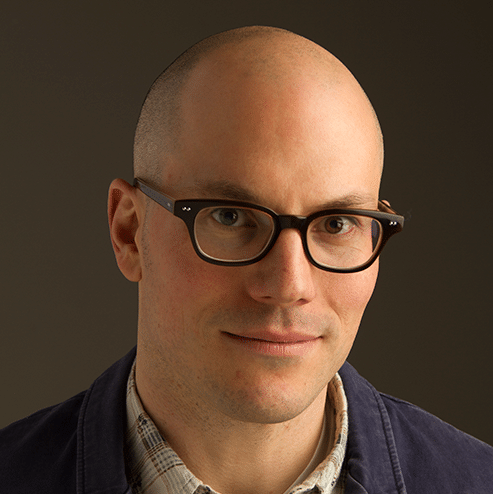In 1995, C.R. Snyder made a compelling case for a theory on hope and proposed a tool for measuring it.
Right off the bat, he points out something that we may not always know about ourselves – that we as humans are inherently goal-oriented. Our cognitive ability to project our thoughts and imagination into the future leads us naturally to come up with goals, whether we realize it or not. Sometimes we articulate these as “dreams”, but they’re really goals that bubble up naturally in each person’s individual consciousness. By calling them dreams, in a way we paint them as unrealistic, but it doesn’t have to be that way.
The beauty of hope theory is that it provides a framework for understanding how people can actually achieve their dreams. It’s an important framework for life coaches and their clients to understand as they paint a holistic picture of health and wellness.
Understanding Hope Theory
Beliefs about agency. Agency is looking at what you believe about yourself as being capable of creating a goal. Based on your past, do you think you can accomplish what you are going to accomplish? Or based on what you think you can learn do you think you can accomplish what you want to accomplish? Beliefs about pathways. Pathways are the steps, the links between actions and results.
The effectiveness of the strategies and the ability to execute on a plan. Motivation as a general attitude. Snyder theorizes that hope isn’t something that is only associated with one goal or another, but that it is a general attitude in human beings. People who generally believe they can identify goals, problem-solve to create pathways, and follow through, approach their world with positive emotions and optimism.
Alternatively, if a person doubts their ability to identify and achieve goals in general, they may approach goal opportunities with negative emotions and fear of failure. Hopeful people are more likely to achieve their goals, because they believe they can. Hopeless people are more likely to fail or not even work towards goals, because they don’t believe they can achieve them. Future orientation. The degree to which you believe that the future will be different from the present based on the increased learning, work, and change that you are going to implement.
Optimism Versus Pessimism
Optimally, people are optimistic about their ability to accomplish the goal, but are slightly pessimistic about the difficulty level and how much energy and resources it’s going to take.
A tool for measurement. In this paper, Snyder proposes his recently articulated theory of hope, presents a tool for measuring it, and speculates on how mental health practitioners can help people cultivate hope in their lives. According to Snyder, hope has two components, motivation and creative power: motivation to get going, to commit to manifesting your vision; creative power to figure out how you’ll get there. Snyder refers to these concepts as agency (your willpower) and pathways (how you perceive your creative ability to map out a route to your goal). Snyder calls this “the will and the way,” and he came up with a definition of hope to reflect it. Hope, he says, is “the cognitive energy and pathways for goals.” He takes it a step further and defines higher hope as the feeling not only that you have articulated a goal and a way to get there, but you also believe in your ability to make it happen. This higher hope produces and maintains the motivation, determination, and action that you need to achieve your goals.
Snyder provides some suggestions for ways that mental health practitioners can work with clients to build their agency and/or pathways:
-
Re-orienting failure focused self-talk to talk about what success would look and feel like. In the situations where you can either laugh or cry, always choosing to laugh – like when you’re stuck. Going easy on yourself and cultivating a sense of humor.
-
Sharing your goals with trusted friends and family who can gently hold you accountable and support you when things get tough. Celebrating your small achievements on the way to larger goals, even if it’s just a pat on the back.
-
Identifying and committing to the training or education you need to develop the skills to work towards certain goals.
-
Taking care of your body, because the mind is part of the body and feeling good will support hopeful feelings – sleeping enough, exercising, eating well, etc.
-
Thinking about goals you’ve achieved in the past and how you felt then.
Why Hope is Essential
Hope is a self-fulfilling prophecy. The theory really highlights that we can either be our own worst enemy, or our own best ally. It’s elegantly simple – if we believe in ourselves, we’re more likely to work towards what we want with purpose and resilience in the face of the challenges we encounter along the way. If we don’t believe in ourselves, any setback can feel like a failure, and it can be really hard to keep going.
Hope is the light at the end of the tunnel. When we’ve committed to a goal that will take consistent effort over long periods of time, sometimes it can get tough. Whether you bonk during a long run while training for a marathon, or you fail a midterm in law school because you are working so hard you just aren’t getting enough sleep, we can all end up in very dark places while working towards a goal.
Hope is the light you can see at the end of that dark tunnel. It’s the voice that says, “I can do this. I’m going to make some adjustments that address the problems I’m experiencing, and I’m going to keep going.” If there’s no light, no hope, it’s easy to see why someone would quit. Hope is the key difference between giving up and doubling down. Hope can be nurtured. It isn’t a static trait that some people have and others don’t. You can consciously grow your capacity for hope. This is an incredible opportunity for coaches. Snyder also highlights that practitioners should work to understand their own hope levels and turn the dial up for themselves to be able to most effectively help others do the same.
How Hope Theory Manifests
In a brief review of closely related theories, Snyder justifies hope theory as something new. For example Stotland (1969) defined hope as one’s evaluation of their probability of achieving a goal. However, this is difficult to measure because it is somewhat vague. Hope theory encompasses Stotland’s concept, but its use of the two components agency and pathways isolates two conditional requirements for goal attainment: being motivated to do something and knowing how to do it. Snyder also reviews theories on optimism, which Seligman (1991) understands as the ability to process negative events externally to maintain an internal positive attitude. Hope theory is different because it articulates how people connect with and manifest positive outcomes, rather than how they avoid negative emotions associated with negative outcomes. Snyder then presents the hope scale, the tool he and his colleagues developed from hope theory’s framework to actually measure hope. The scale is a one page collection of 12 single sentence statements. Respondents use a four point scale to report how true each statement is for them. Four of the questions directly measure agency (topics like success and enthusiasm when working towards something), and another four directly measure pathways (topics like perceived problem-solving ability and optimism about figuring something out).
The remaining four questions are filler questions to distract participants from being able to figure out exactly what was being measured, which could bias their responses. Snyder reiterates that people who have high levels of hope achieve better life outcomes than people with low levels of hope. He cites research that has demonstrated that higher levels of hope are correlated with better injury recovery, less burnout during work, better success with goals, more total and more difficult goals, the perception that their goals are challenges that they grow from, and higher levels of happiness (Elliott et al. 1991, Sherwin et al. 1992, Snyder 1993, Snyder 1994a, Snyder 1994b, Snyder et al. 1991a, Snyder et al. 1991b). Snyder ends the paper with a section describing how mental health professionals could use hope theory and the hope scale to help people nurture and develop hope. For counselors (or coaches!), he says, the ability to turn the hope dial up could be really powerful. To start, they can use the hope scale to establish a baseline for clients’ levels of hope, and identify whether their problem areas are in the agency bucket, the pathways bucket, or both. Understanding the bucket(s) that low hope feelings come from, practitioners and clients can focus on the most important areas for work.
——————————————————————————————————————————————————
References:
Elliott, T. R., Witty, T. E., Herrick, S., & Hoffman, J. T. (1991). Negotiating reality after physical loss: Hope, depression, and disability. Journal of Personality and Social Psychology, 61, 608–613.Seligman, M. E. P. (1991). Learned optimism. New York: Knopf.Sherwin E.D., Elliott T.R., Rybarczyk B.D., Frank R.G., Hanson S. & Hoffman J. (1992) Negotiation the reality of caregiving: hope, burnout and nursing. Journal of Social and Clinical Psychology 11(2), 129–139.Snyder, C. R. (1993). Hope for the journey. In A. P. Turnball, J. M. Patterson, S. K. Behr, D. L. Murphy, J. G. Marquis, & M. J. Blue-Banning (Eds.), Cognitive coping, families and disability (pp. 271–286). Baltimore: Brookes.Snyder, C. R. (1994a). Hope and optimism. In V. S. Ramachandren (Ed.), Encyclopedia of human behavior (Vol. 2, pp. 535–542). San Diego, CA: Academic Press. Snyder, C. R. (1994b, August). Hope for the many vs. hope for the few. Paper presented at the annual meeting of the American Psychological Association, Los Angeles.Snyder, C.R. 1995. Conceptualizing, Measuring, and Nurturing Hope. Journal of Counseling and Development 73(3): pp. 355 – 360. Snyder, C. R., Harris, C., Anderson, J. R., Holleran, S. A., Irving, L. M., Sigmon, S. T., Yoshinobu, L., Gibb, J., Langelle, C., & Harney, P. (1991a). The will and the ways: Development and validation of an individual-differences measure of hope. Journal of Personality and Social Psychology, 60, 570–585Snyder, C. R., Irving, L., & Anderson, J. R. (1991b). Hope and health: Measuring the will and the ways. In C. R. Snyder & D. R. Forsyth (Eds.), Handbook of social and clinical psychology: The health perspective (pp. 285–305). Elmsford, NY: Pergamon.Stotland, E. (1969). The psychology of hope. San Francisco: Jossey-Bass.



